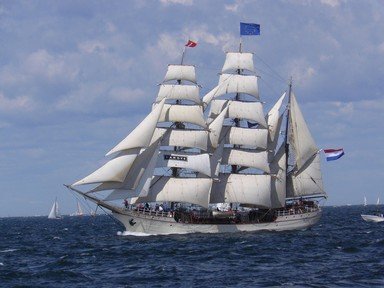Quiz Answer Key and Fun Facts
1. A three-masted merchant sailing ship famous for its speed
2. A small warship often used for coastal patrol, or as a missile boat
3. An oar-propelled heavy warship widely used in Ancient Rome
4. A traditional sailing vessel of the Red Sea and Indian Ocean
5. A flat-bottomed boat often used for carrying cargo in shallow waters
6. An early 20th-century battleship armed with heavy-calibre guns
7. A sailing ship frequently used for trading and piracy in the Mediterranean
8. A large, multi-decked ship used for war and commerce in the 16th-18th centuries
9. A commercial fishing boat equipped with nets
10. A sailing ship from East and Southeast Asia with fully battened sails
Source: Author
LadyNym
This quiz was reviewed by FunTrivia editor
stedman before going online.
Any errors found in FunTrivia content are routinely corrected through our feedback system.
